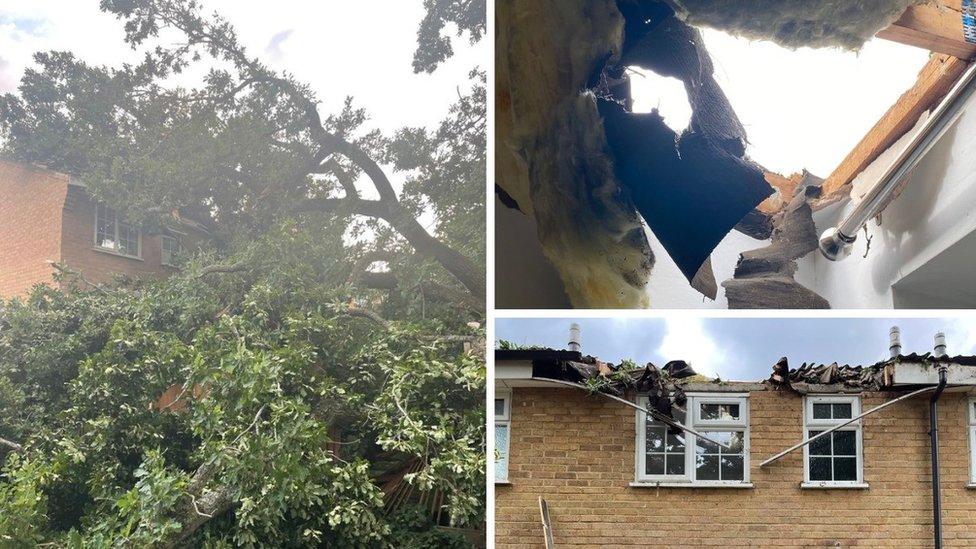Tree that damaged Bracknell homes protected from removal
- Published

Debbie Smith said applying to Bracknell Forest Council to have the tree cut down had been "nothing but hassle"
A tree that damaged three homes when part of it fell cannot be removed due to a tree protection order.
A large branch from the oak tree at the bottom of Debbie Smith's garden in Bracknell broke, damaging her property, two neighbouring houses and two cars.
The tree is under a Tree Protection Order (TPO) and cannot be cut down without permission, which the local council has refused to give.
Residents claim the tree is dangerous but the council does not agree.
An inspection paid for by residents found the tree to have a fungus causing decay, but Bracknell Forest Council's own tree officer disputes this.
The council says the tree only has a fungus commonly found in oak trees and does not cause decay.
The incident happened at the beginning of September, three weeks after Mrs Smith and her husband moved into the property, according to the Local Democracy Reporting Service (LDRS).
She said: "Luckily, we were not at home at the time, but the neighbours were in their living room and were not hurt just very shaken.
"If anyone had been in our spare bedroom or both gardens [they] would have been hurt or killed."
Residents from all three homes have been forced out, with Mrs Smith staying with family.

The branch fell on top of the houses damaging three properties and two cars in September.
Tree Protection Order
Certain trees are given TPO status - an order made by a local planning authority to protect specific trees, groups of trees or woodlands.
Mrs Smith applied to Bracknell Forest Council for permission to have it cut down but said the process had been "nothing but hassle".
She said a tree report was conducted ten years ago, following a similar incident, which showed the tree was decaying, LDRS reported.
A report paid for by Mrs Smith found the oak had Armillaria Mellea - a wood decay fungi - and recommended it was felled.
However, the council's tree officer stated it "obtained the opinion of an expert" who concluded the fungi was Laetiporous sulphureus - a common species found on oak tree trunks.
'Justification'
Mrs Smith said she felt the officer was ignoring two reports stating the tree was dangerous.
"Now we feel bullied into either withdrawing the application or finding £400 to have another arboriculture report [done] when the first two are not good enough for him.
"We are not doing this because we don't like the tree… it is dangerous and could eventually kill someone", she added.
Head of Natural Estates at Bracknell Forest Council, Stephen Chown, said they were "unable to comment" on a live TPO application, but stated all applications "must demonstrate the justification for the work".

Follow BBC South on Facebook, external, Twitter, external, or Instagram, external. Send your story ideas to south.newsonline@bbc.co.uk, external.